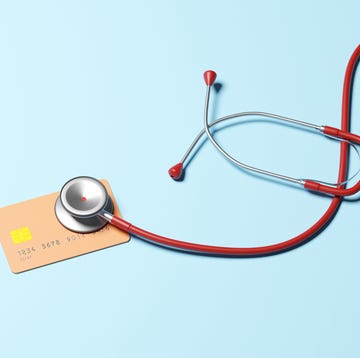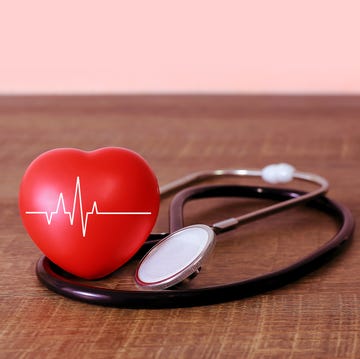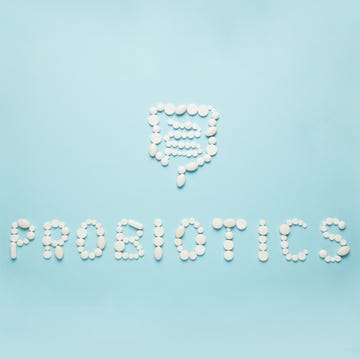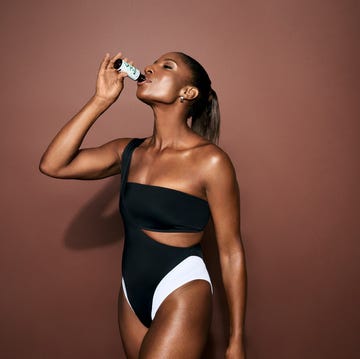The sun has got its hat on! Which means, of course, that you’ll have yours on, too, plus your sun block, a water bottle, a loose, long-sleeved cotton shirt (hip, hip, hip, hip, hooray)… Because we all know the risks and how to look after our skin in the sun by now, right?
Well, perhaps. But the sun poses us distinct challenges at specific stages of our lives. So do we need to think differently about sun protection at different ages?
‘Absolutely,’ says Dr Anjali Mahto, Consultant Dermatologist & Founder of Self London. ‘In childhood, sun protection is primarily about preventing severe sunburn, which significantly increases the risk of melanoma later in life. In your 20s and 30s, you may be more focused on aesthetic concerns like premature ageing and pigmentation, but protection is still vital. By midlife and beyond, the focus often shifts to preventing cumulative damage and skin cancers.’ So what do you need to know during this heat wave, and at your current stage of life?
Childhood and adolescence
Last year, a survey conducted by the charity Melanoma Focus suggested that 66% of UK people aged 16-65 remember getting sunburnt as a child and 65% of those said they burned badly. Yet studies suggest that one blistering sunburn in childhood or adolescence more than doubles your chances of developing melanoma skin cancer later in life, while five or more bad sunburns between ages 15 and 20 increases your later risk by 80%.
What to do? For that reason, says Susanna Daniels, CEO of Melanoma Focus: ‘it’s especially important to avoid burning in childhood. You can do this by seeking shade and using sun hats, sunglasses and sunscreen (SPF 30 or above) to cover up exposed skin, especially in the heat of the day.’
Choose your sunscreen carefully. ‘We recommend that, particularly for children, you don’t use sun creams that claim to only need one daily application,’ says Daniels. ‘These types of sun creams have been tested in controlled laboratory conditions where certain factors such as swimming, exercising and sweating have not been taken into account.’
Young adulthood
‘When we’re younger, the skin tends to repair itself more efficiently,’ says Dr Mahto. As a result, you may not notice the damage that sun is doing to you. Yet: ‘most skin cancers, including basal cell carcinoma, squamous cell carcinoma, and melanoma, are linked to long-term sun exposure,’ she explains. So protection is still vital.
For women, there’s yet more. An estimated four in five sufferers of autoimmune diseases are women. For lupus, the proportion rises to nine out of 10, and ‘UV exposure can trigger or worsen symptoms, making sun protection vital for those at risk,’ says Dr Mahto.
What to do? UV radiation from the sun is comprised of UVB, UVA and UVC. The latter is mostly absorbed by the earth’s atmosphere, so sunscreens are designed to protect against the former two. That said, if you look at the SPF, or ‘sun protective factor’ on a bottle of sunscreen, the number really relates to the amount it protects you from UVB. That’s the kind associated with cancer and burning. UVA rays are the ones associated with wrinkles, and can aggravate Lupus symptoms too. So look for a broad-spectrum sunscreen as these are intended to protect against both UVA and UVB radiation.
During pregnancy
According to the NHS, pregnant women may find they burn more easy. There’s more. ‘Women are more likely to develop conditions such as melasma, which is often triggered by hormonal fluctuations and exacerbated by sun exposure,’ says Dr Mahto. ‘This pigmentation disorder is especially prevalent during pregnancy, with contraceptive use, or around menopause.’
What to do? To guard against melasma, the British Association of Dermatology recommends avoiding the sun, wearing a wide-brimmed hat when outside and wearing broad-spectrum sun cream (SPF 30 or above, with a high UVA rating).
During the menopause
‘Hormonal changes during the menopause can make the skin more vulnerable to sun damage,’ says Dr Mahto. Oestrogen, she explains, plays a key role in maintaining skin thickness, hydration and elasticity. As levels of that hormone decline during the menopause, your skin tends to become thinner, drier, and less able to repair itself after damage. ‘The barrier function of the skin is weakened, potentially allowing UV rays to penetrate more deeply and cause more harm,’ says Dr Mahto.
What to do? The NHS actually advises menopausal women to get some sunlight on their skin, as it triggers the production of Vitamin D, in turn helping to keep your bones healthy. That said, the risks remain and pigmentation issues can also raise their head at this stage of life, exacerbated by sun exposure. ‘It’s therefore especially important for menopausal women to prioritise sun protection, including broad-spectrum sunscreen and protective clothing,’ says Dr Mahto.
She recommends Vitamin B3 (niacinamide) for menopausal skin: ‘it strengthens the skin barrier, improves hydration and reduces inflammation, which is especially helpful as oestrogen levels decline,' she says. 'Niacinamide can also help to even skin tone and reduce pigmentation by slowing the transfer of pigment to skin cells. It’s a gentle but effective ingredient that suits mature skin well and it pairs nicely with other actives like retinoids or antioxidants for a comprehensive skincare routine during and after menopause.'
It also has protective effects against against ultraviolet damage caused by sun exposure, and a randomized controlled trial published in the New England Journal of Medicine, suggested that - taken orally and under very specific conditions - it can reduce the risk of basal cell carcinoma and squamous cell carcinoma. Remember though, it's no substitute for the basics: sun block and shade.
Older adulthood
‘Older skin is thinner and less resilient, making it more prone to dryness, pigmentation and pre-cancerous lesions,’ warns Dr Mahto. But other age-related changes, way beneath the skin’s surface, affect the sun’s impact on you, too. Your immune surveillance weakens slightly with age, she explains, leaving it less able to correct the cellular mutations that UV radiation can trigger. So while the sun remains a risk throughout life, the effects can be longer lasting in older adults and profound risk like that of skin cancer rise, making consistent protection even more important as we get older.
What to do? ‘People in their 60s and beyond don’t necessarily need a higher sunscreen than younger adults - SPF 30 or 50 remains the standard,' says Dr Mahto. 'Starting a daily routine that includes broad-spectrum sunscreen, wearing protective clothing and avoiding midday sun can protect your skin from further damage,’ says Dr Mahto. That said, she recommends looking for sunscreens with added antioxidants to protect against oxidative stress, and opt for moisturising formulas to combat drier, thinner skin: ‘it’s never too late to start protecting your skin.’













